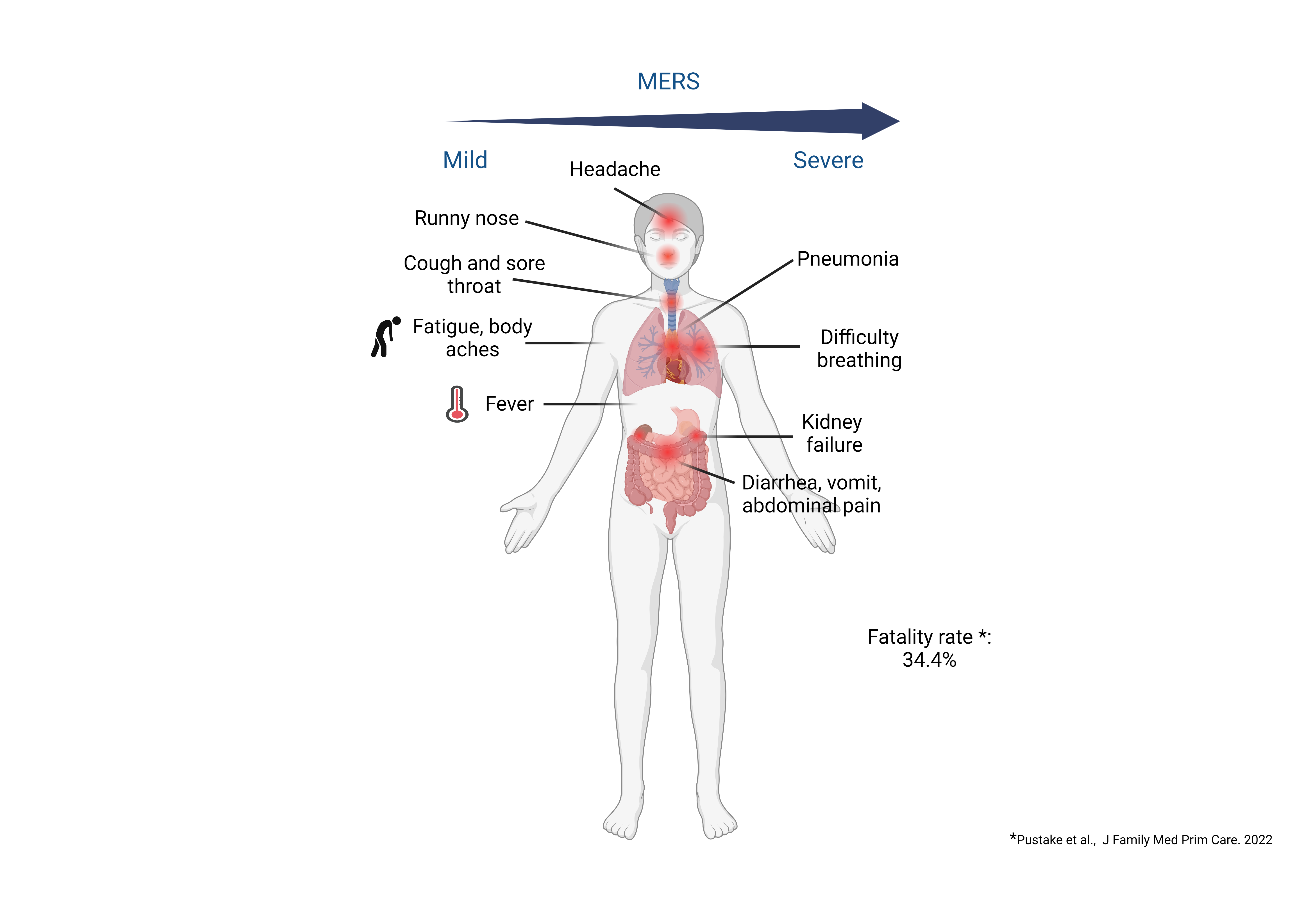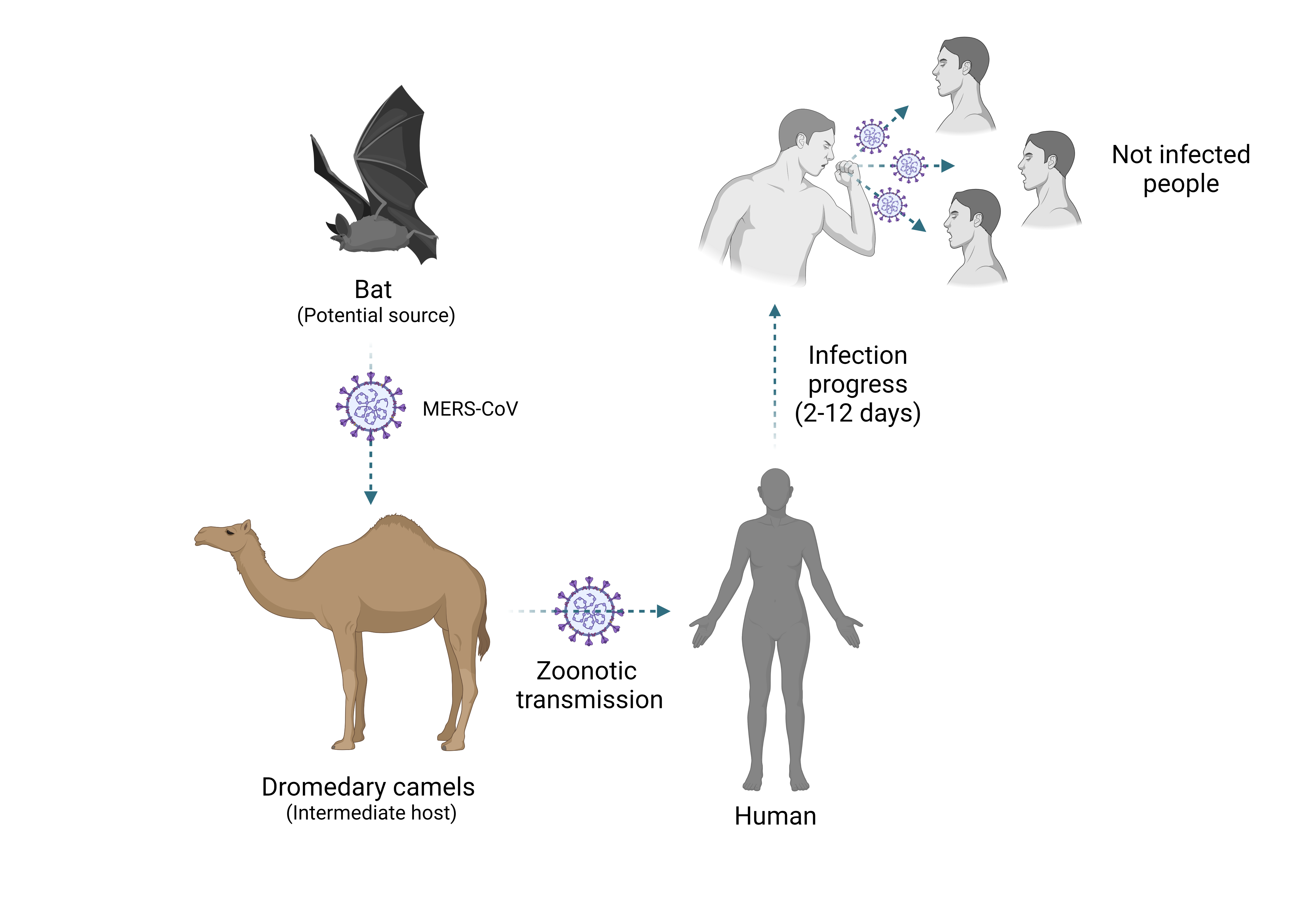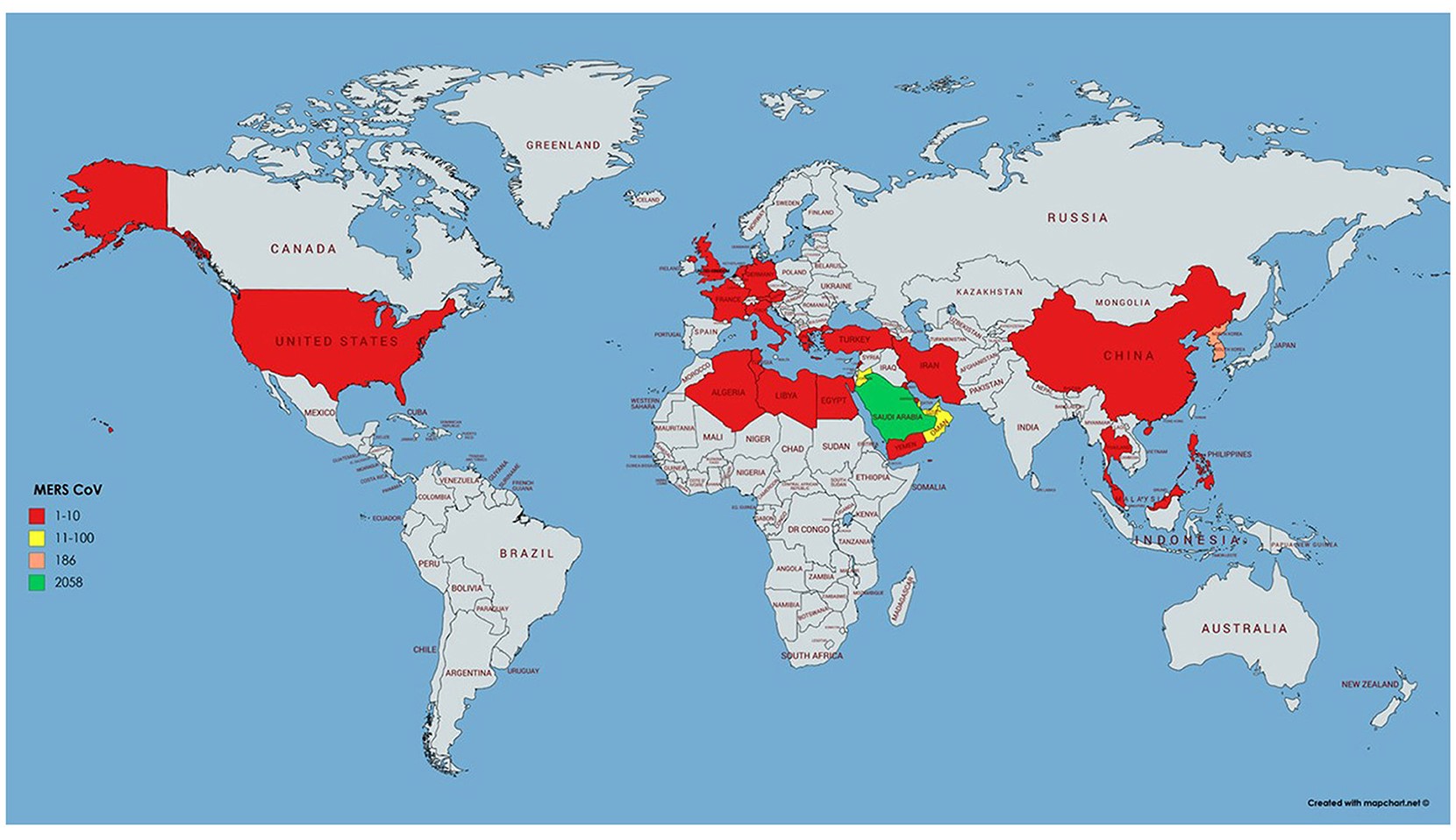Middle East respiratory syndrome–related coronavirus (MERS-CoV)

Some infected individuals may experience mild symptoms (similar to a cold) or remain asymptomatic.
Symptoms typically appear 5 to 6 days after exposure, but may range from 2 to 14 days.
Medical conditions such as diabetes, chronic lung, heart or/and kidney may incrrease the risk of having severe illness.

Bats are considered the natural reservoir of MERS-CoV while camels can be considered an intermediary host for MERS-CoV.
Direct contact with infected camels or their bodily fluids (e.g., nasal secretions, urine) may be responsible for the zoonotic transmission for a human.
Close contact with infected individuals or their respiratory secretions allows the transmission between humans.

Emerged in 2012 in the Middle East, causing sporadic outbreaks with cases reported in several countries.
The high mortality rate associated with MERS-CoV infections (around 35%) raised concerns about the potential for wider outbreaks and the need for effective treatment options and preventive measures.
While the overall number of MERS cases remained relatively low compared to other respiratory viruses like SARS-CoV-2, its potential for causing severe illness and the possibility of zoonotic transmission underscored the importance of ongoing surveillance and preparedness for emerging infectious diseases.
The toolbox for this virus is currently in development. Please contact us via info@virusbankplatform.be for more information.